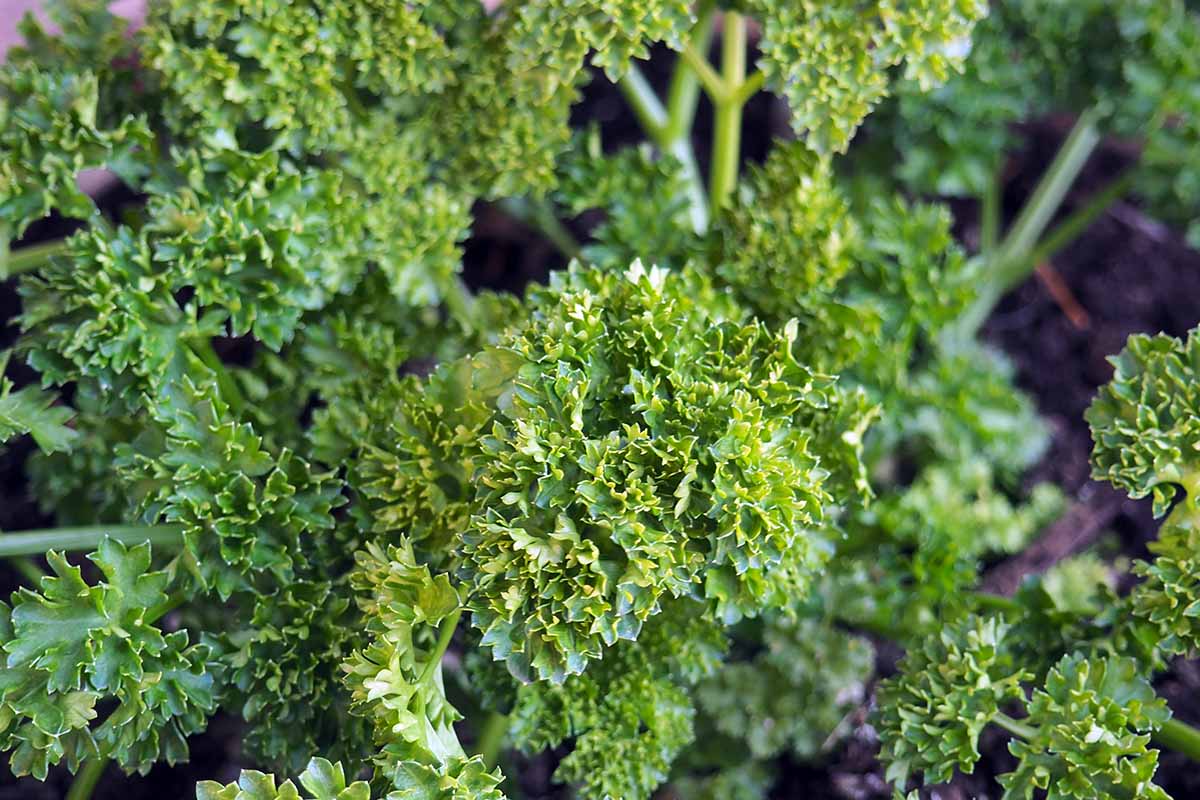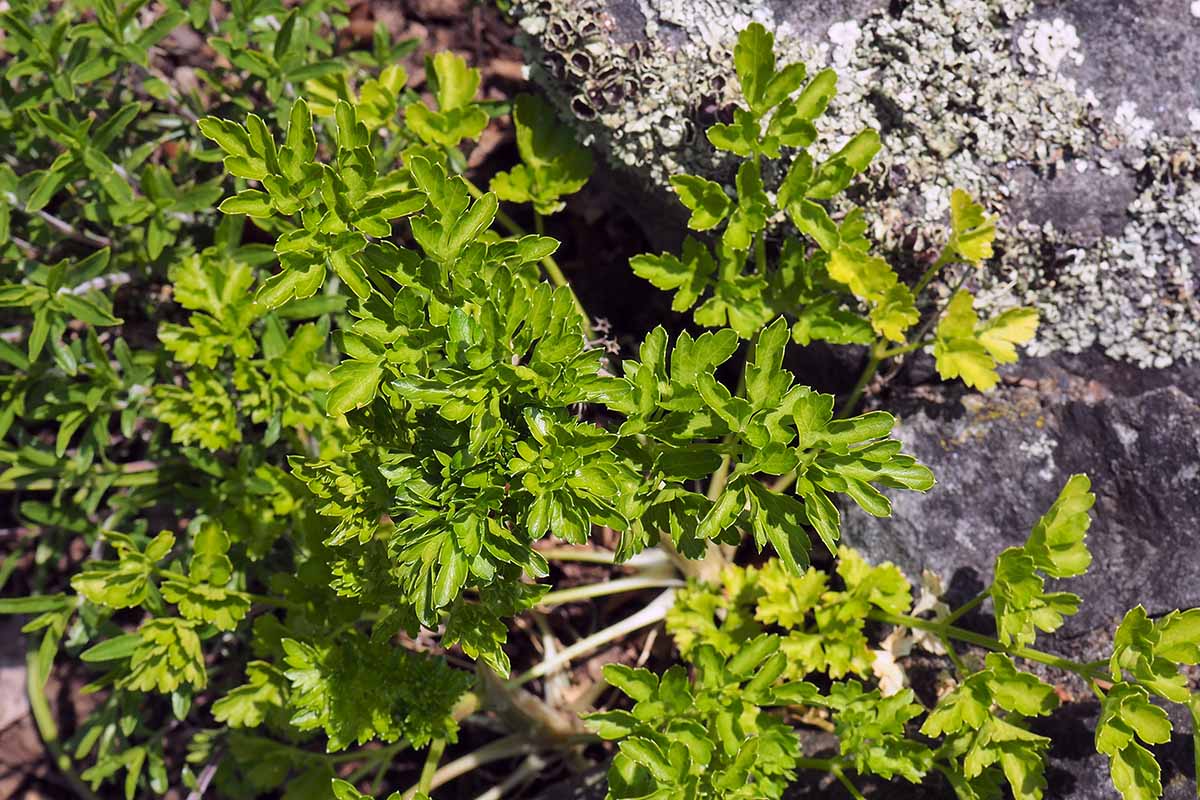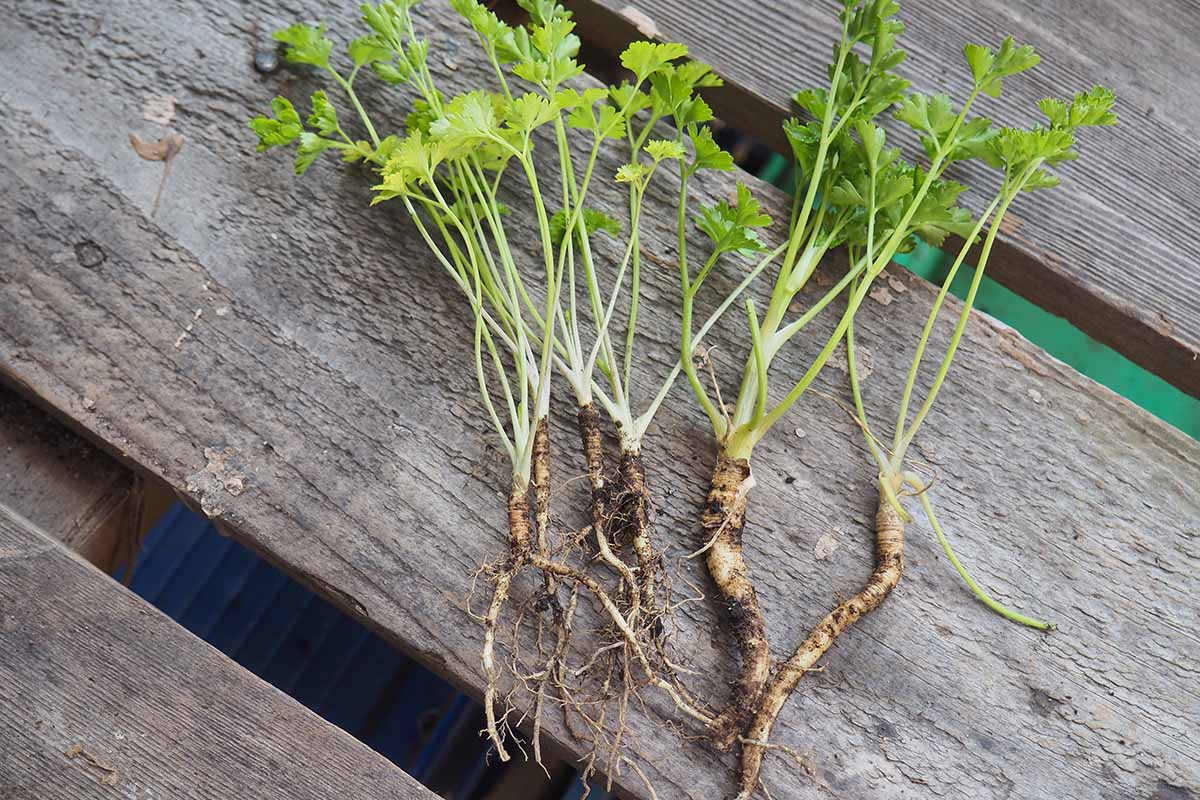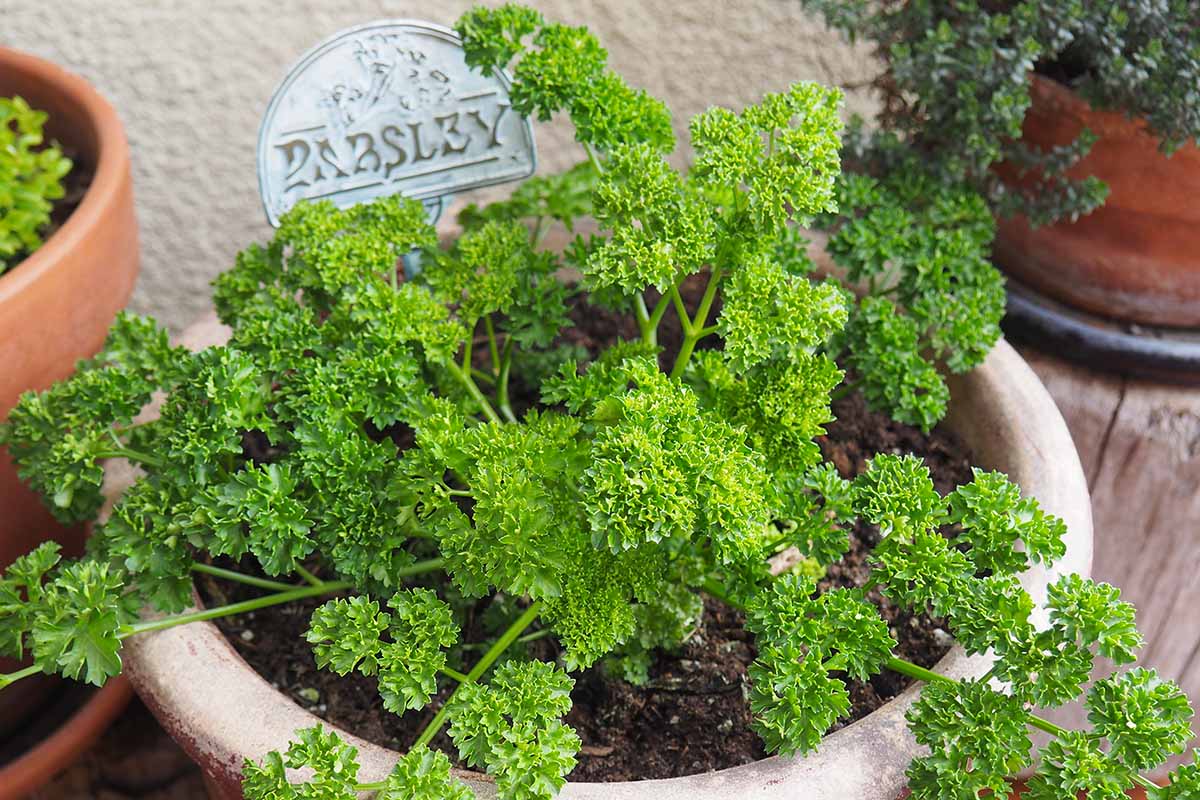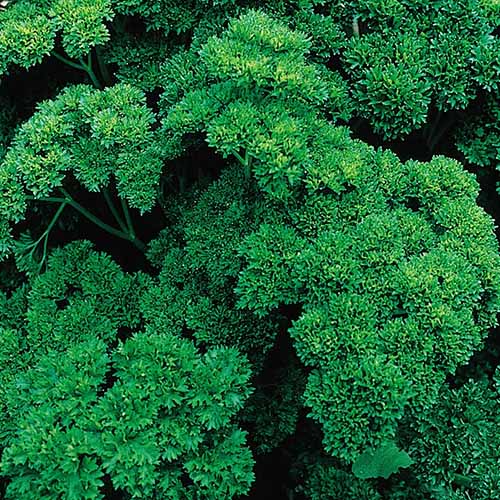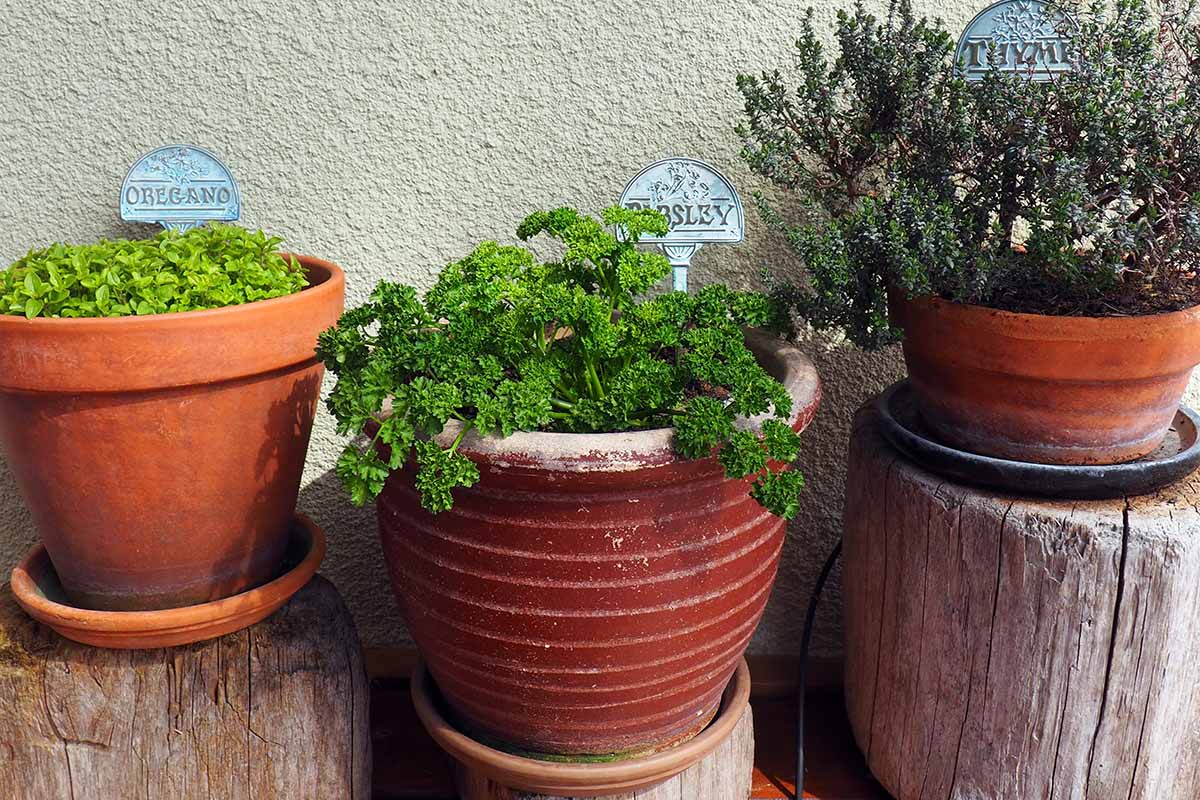The tasty leaves are also highly nutritious and used to add savory flavor to a huge variety of dishes, from herbed butters to smoothies to hearty stews. We link to vendors to help you find relevant products. If you buy from one of our links, we may earn a commission. The two most commonly cultivated varieties – curly and flat-leaf – make excellent container plants and the attractive, deep green foliage also makes a pretty ornamental that can be added to flower pots. The curly type is often used as a decorative garnish while the flat leaf variety, with its brighter, more intense flavor, is most often preferred for culinary use – and it’s a bit more heat tolerant as well. Often grown as annuals, these are fairly cold-tolerant plants. They can handle a nip of frost, and in the right conditions, they may overwinter as biennials for a late season crop before going to seed. Fragrant, tasty, and easily cultivated, is it time to add parsley to your container garden? We’re glad you said yes! Let’s jump in to explore the necessary steps to grow your own in containers. Here’s everything that’s coming up:
Curly or Flat Leaf
Two varieties of parsley are commonly grown for their richly flavored leaves. Curly leaf parsley (Petroselinum crispum var. crispum) grows eight to 12 inches tall and is the type often used commercially as a garnish, but it has plenty of flavor for everyday cooking as well. And the crisply furled foliage also makes a lush filler when mixed with flowers in hanging baskets, patio pots, or window boxes. Flat leaf, or Italian parsley (P. crispum var. neapolitanum), grows 18 to 24 inches. It has celery-like stalks and is preferred by professional chefs and cooks due to its bright, intense flavor and ease of handling on the cutting board. Both varieties can be frozen or dried. They also make excellent companions for veggies such as asparagus, carrots, corn, onions, and tomatoes in the garden, due to their pest-repellant and flavor-enhancing properties. Hamburg parsley, P. crispum var. tuberosum, is a tuberous variety with edible leaves. The large, parsnip-like roots have a taste akin to carrots heavily seasoned with parsley, and this variety is most often grown as a vegetable.
Indoor Seeding
Parsley is known to have a low germination rate, but the process can be improved by soaking the seeds in warm water for up to 24 hours before planting. Start seeds indoors six to 10 weeks before the last frost, then transplant to permanent containers once warm temperatures arrive. Use peat pots or plug trays at least four inches deep to accommodate parsley’s long taproot, which does best when left undisturbed. Fill pots with a sterile seed-starting mix. Sow a few seeds per pot and cover with a quarter-inch of soil. Place pots in a sunny windowsill or use a grow light to ensure they receive adequate light. Find details on how to use grow lights in this guide. Keep the soil moist but not wet. Seeds germinate in 12 to 28 days in temperatures between 50 and 70°F, with a better sprouting rate found at the warmer end of the range. To prevent shock, harden plants off gradually for a week before transplanting into larger containers when seedlings have at least three pairs of leaves. For detailed steps, read our guide on how to start parsley from seed.
Container Care
Parsley’s a natural in any container and is just as easily grown in a small pot, large patio planter, or mixed into a window box. But, due to their deep taproots, they need some depth to their container – choose vessels that are at least 12 inches deep for the most vigorous performance. Plants enjoy moist but not wet soil and excellent drainage is mandatory. Ensure containers have adequate drainage holes. I like to add a layer of drainage material such as broken pottery or pebbles to the bottom of the pot. Fill containers with a loamy, humus-rich soil with a slightly acidic to neutral pH of 6.0 to 7.0 and amended with moisture-retentive materials such as coconut coir, peat moss, perlite, or vermiculite. Mix in some bone meal for healthy roots. Sow seeds in short circular or straight shallow lines (drills), depending on the container shape. Cover with a quarter-inch of soil. Once seedlings have at least one set of true leaves, thin down to the number appropriate for your container. Three plants can grow comfortably in a pot that’s 12 inches deep and 12 inches wide. If you’re transplanting seedlings, scoop out a few handfuls of soil to make a deep crater for the long roots, then gently backfill, disturbing them as little as possible. Place containers in a full to partial sun location, with light afternoon shade in hot regions. Keep the soil moist but not wet and water deeply when the top inch of soil is dry to the touch. Feed container plants monthly with a balanced fertilizer, such as 10-10-10 NPK. If needed, add a two- to four-inch layer of leaf mold or straw mulch to help prevent moisture loss. In areas with mild winters, in USDA Hardiness Zones 8 and above, container plants can overwinter as biennials for a late crop in winter or early spring. If you do overwinter plants, they might need a cloche for protection from freezing temperatures – you can read about that in our guide on how to grow parsley in winter. Containers can also be tended indoors, provided they receive six to eight hours of bright light daily. Here’s a sample of some popular choices. Italian Flat-Leaf Italian flat-leaf seeds in packets or in bulk are available at True Leaf Market. Curly Parsley For curly parsley, seeds in packets and bulk quantities are available at Eden Brothers. ‘Triple Moss Curled’ Or try the ‘Triple Moss Curled’ type with densely curled leaves – seeds in packets and bulk are available at True Leaf Market. ‘Double Curled’ You’ll also find packets of organic ‘Double Curled’ seeds available at Burpee. ‘Hamburg Rooted’ If you’d like to try tuberous parsley root, ‘Hamburg Rooted’ seeds in packets and in bulk are available at Eden Brothers.
Harvest Container Plants
To keep plants vigorous, wait until they’re at least six inches tall and have three sets of leaves before harvesting. To harvest, use clean, sharp kitchen scissors to snip off outer leaves – cutting from the outside encourages fast regrowth. Avoid cutting the terminal bud. Harvest a few leaves to use right away or take more and store it in the refrigerator with the cut ends submerged in a small glass of water for up to 10 days. Parsley also freezes readily for up to eight months and can be dried as well. Drying and freezing details can be found in our guide on how to grow parsley in your herb garden.
Potager Perfection
Fragrant, flavorful, and fast-growing, parsley is a breeze to grow in containers – perfect for the convenient kitchen garden or potager! Start seeds indoors to get a jump on the season, then plant out into pots once spring arrives. Harvest mature plants frequently for a steady supply of leaves and freeze up the surplus for even more convenience. How do you folks use parsley in containers? Tell us about it or submit a photo in the comments section below. And for more information about growing kitchen garden herbs, check out these guides next:
How to Grow Herbs in ContainersHow to Start Your Own Herb Garden5 of the Best Ways to Freeze Fresh Herbs

